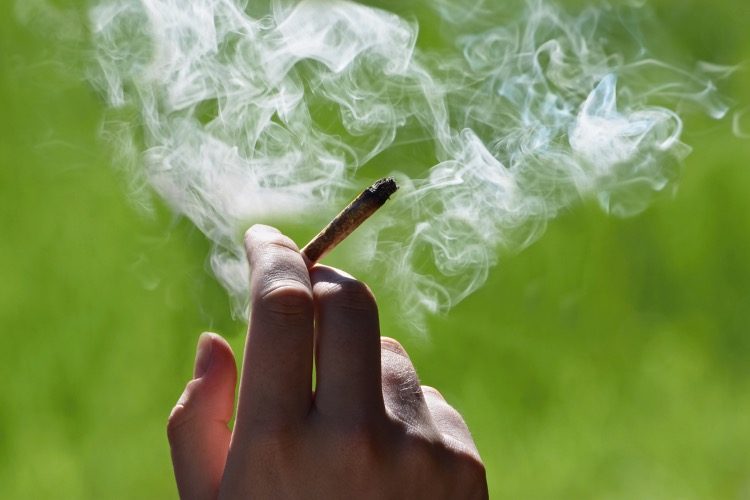
A first-of-its-kind study comparing state cannabis laws with the growing phenomenon of “driving under the influence of cannabis” (DUIC) found that states with permissive policies potentially risked public safety due to the increased number of cannabis-intoxicated drivers on their roads.
The Drug Free America Foundation (DFAF) unveiled last week their latest study concerning troubling results about marijuana legalization. According to a DFAF press release, “In states that have legalized high-THC marijuana — either medically or recreationally — the frequency of marijuana-impaired driving is 32 percent higher than in states that haven’t. The study suggests that the loosened marijuana policies in the 18 less restrictive states resulted in a million more cases of marijuana-impaired driving.”
The report built on the fact that “fatalities in the U.S. from marijuana-impaired drivers have risen dramatically between 2000 and 2018, rising from 9 percent of all fatal crashes to 21.5 percent.” The research focused on this main question: Do less-restrictive state policies regarding cannabis use encourage greater cannabis positivity among drivers and, therefore, higher prevalence of DUIC?
In the study, “the 50 states were divided into two groups, representing: (1) less permissive states that have only acted on decriminalizing marijuana use or implemented low-THC medicinal programs, and (2) more permissive states with high-THC medicinal programs and full recreational marijuana programs.”
“The loosening of marijuana restrictions in states that have legalized the drug has introduced a more permissive culture. At the same time, little effort has been made to address the potential risks of marijuana-impaired driving,” according to Amy Ronshausen, executive director of Drug Free America Foundation. “Americans are clearly responding to the policy enactment of marijuana programs, with self-reported past-year marijuana use skyrocketing from 10.4 percent in 2002 to 19.3 percent in 2021,” she added.
The DFAF press release stated:
Simultaneously, marijuana potency has also grown exponentially, from the “Woodstock Weed” that contained THC levels of 1-3 percent to the modern commercial marijuana that averages THC levels of between 19.2 and 21.5 percent. “The loosening of marijuana restrictions through state policy changes has introduced cultural changes in marijuana use perceptions, while little effort has been placed in reinforcing the potential risks marijuana-impaired driving places on traffic safety,” Ronshausen said.
“Making matters worse, the challenge of detecting and enforcing marijuana-impaired driving laws remains an imperfect science. For example, most traditional blood alcohol or field sobriety tests are ineffective and inadmissible in court,” she continued.
Adding to the DFAF study results, a 2020 study by the AAA Foundation for Traffic Safety found that a “concerning number of Washington state drivers involved in fatal crashes are testing positive for recent use of marijuana.”
AAA stated, “The share of drivers who, after a fatal crash, tested positive for active THC — the drug’s main psychoactive ingredient — has doubled since the state legalized marijuana in December 2012.” “This study enabled us to review a full 10-years’ worth of data about the potential impact of marijuana on driving safety — and it raises significant concerns,” said Dr. David Yang, executive director of the AAA Foundation for Traffic Safety. “Results from the analysis suggest that legalization of recreational use of marijuana may increase the rate of THC-positive drivers involved in fatal crashes.”
The AAA listed the following impacts on “Cannabis & Driving”:
- Research shows that marijuana can impair drivers in a variety of ways. It can affect psychomotor functions such as attention, reaction time and coordination, but generally it appears to affect automated or routine driving more than tasks requiring conscious effort.
- Further, numerous laboratory-based studies have demonstrated that marijuana use impairs many aspects of cognitive and physical function that are necessary for safe driving.
- Marijuana can decrease car handling, can impair performance and attention while increasing reaction times, following distance and lane deviation.
- Mixing alcohol and marijuana may produce effects greater than either drug on its own.
The analysis in the DFAF comparison study found that enactment of more permissive state policies was correlated with a statistically significant increase in the percentage of DUIC.
“The ramifications of the differences in permissiveness between states with high-THC programs and low-THC or no cannabis programs can be quantified into a correlative impact of cannabis-intoxicated drivers. In fact, using 2017 population statistics, the correlative effect of permissive cannabis policies can be forecasted to an increase of 1,062,913 more cannabis-intoxicated drivers in the 18 more permissive states. Moreso, with the addition of seven more states with recreational cannabis programs in the past five years, the estimated correlative impact of more permissive cannabis policies equals 1,368,198 additional cannabis-intoxicated drivers,” stated the DFAF report.
According to the DFAF study, “As of November 2022, approximately 72 percent of Americans now live in a state with a medicinal or recreational cannabis program.” That places a majority of Americans at risk of potential harm if DUIC incidents increase as forecast.
To gain a handle on DUIC incidents, the DFAF report concluded that state legislators and local government policy makers “should consider the risk of DUIC as they consider expansions to legal cannabis programs that involve cannabis consumption and driving.”




